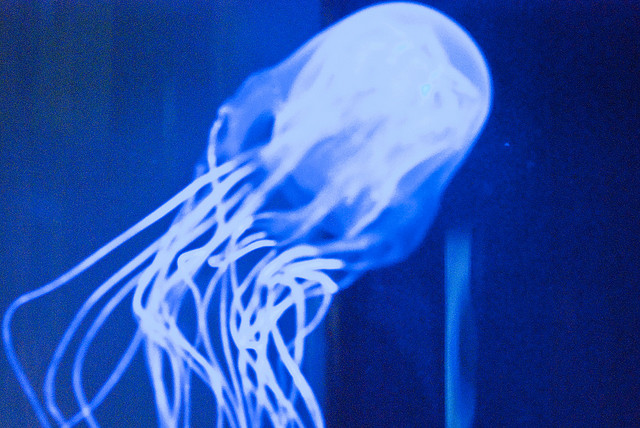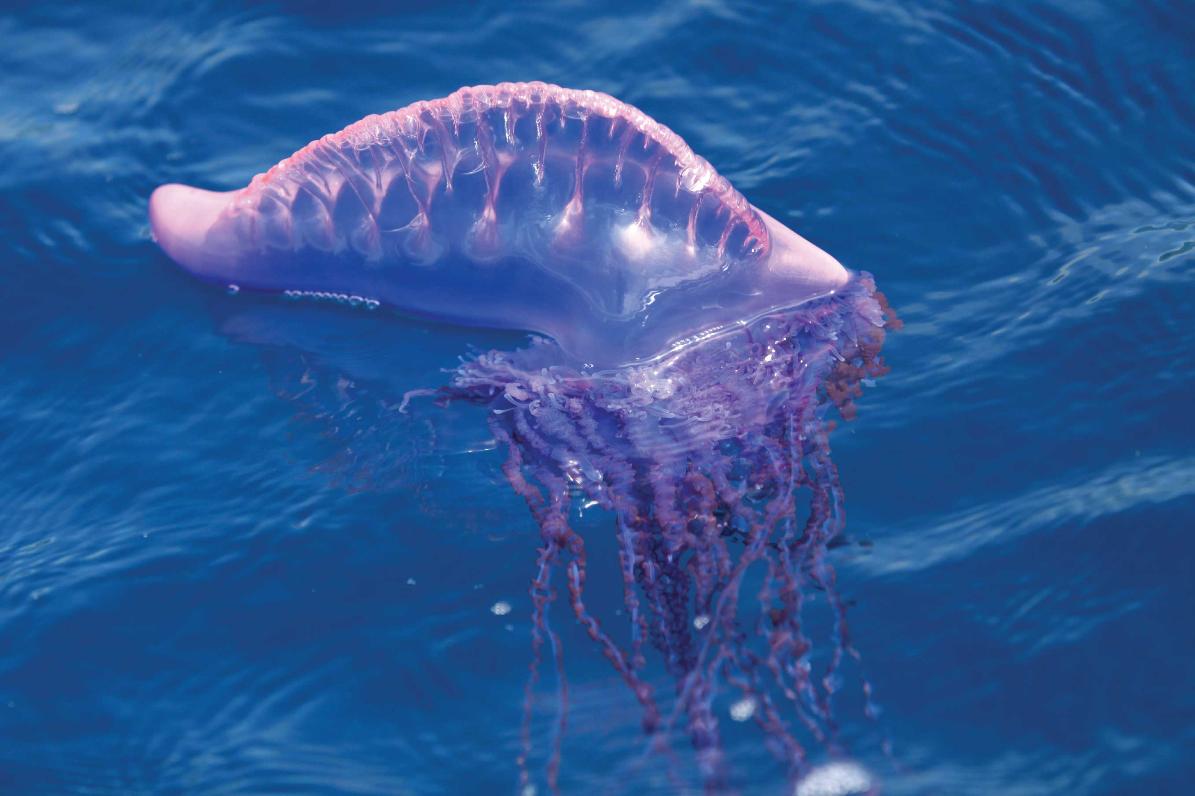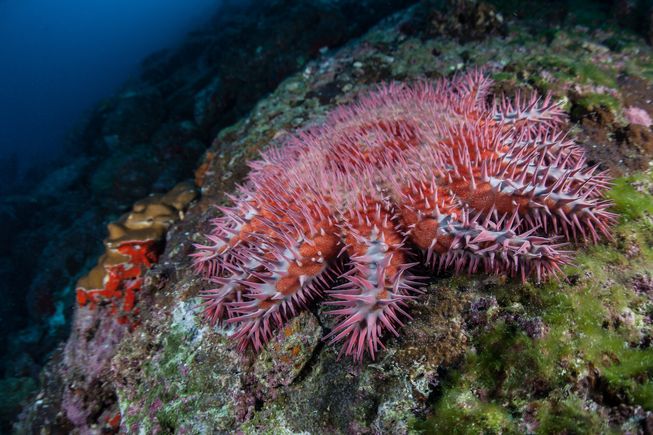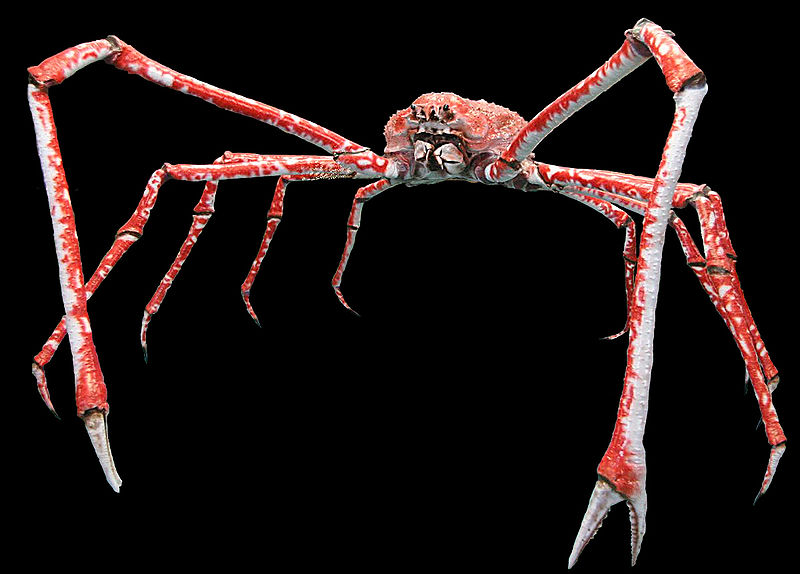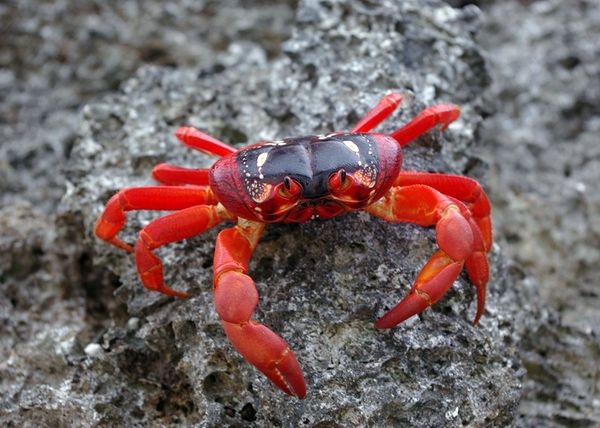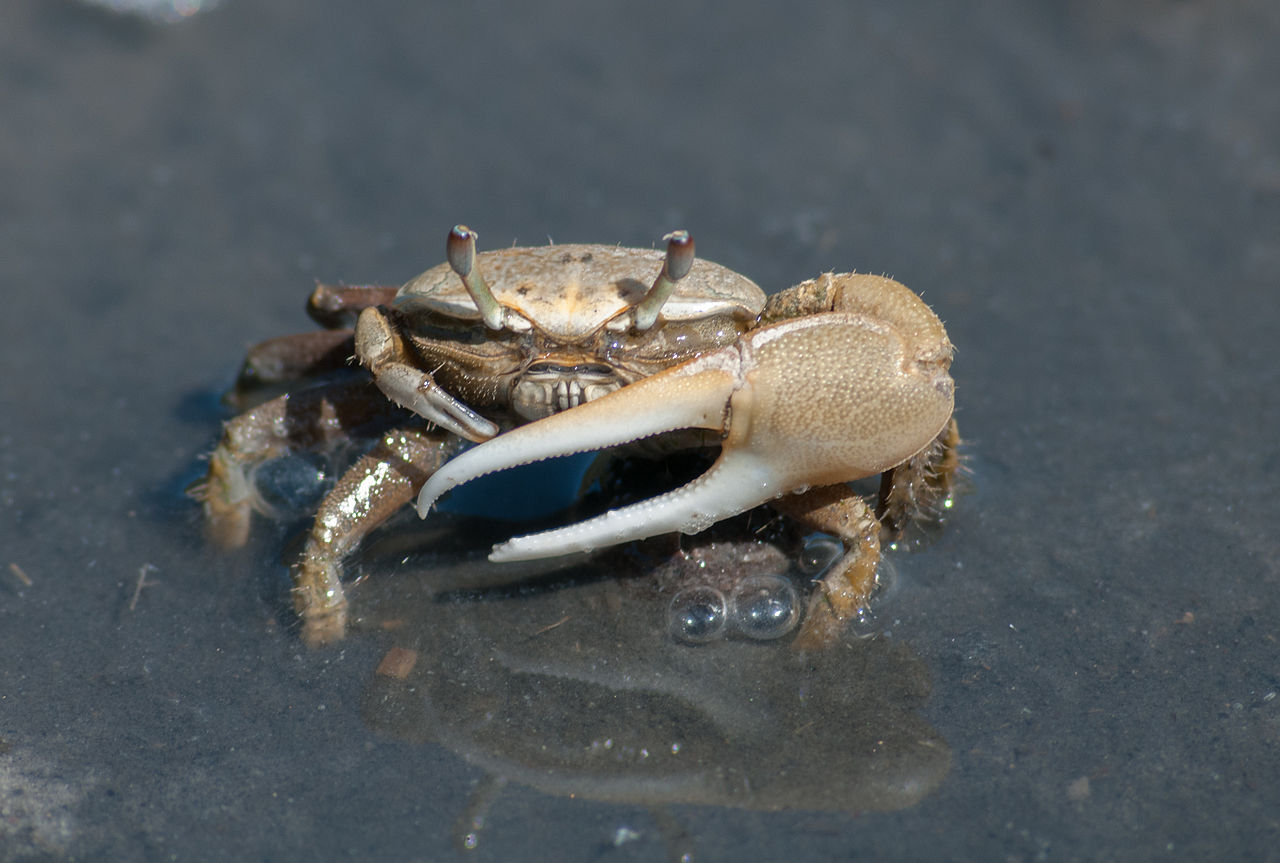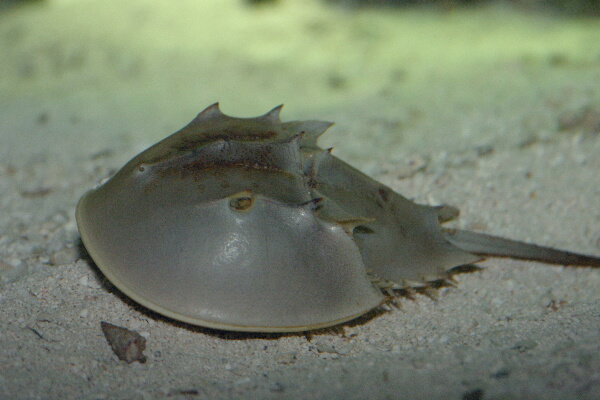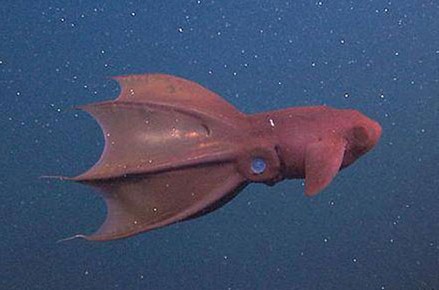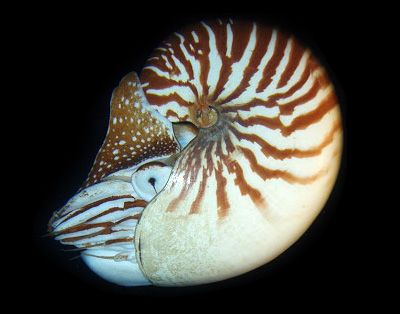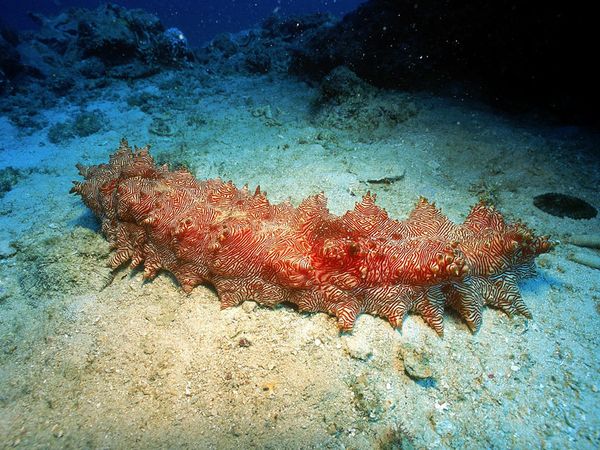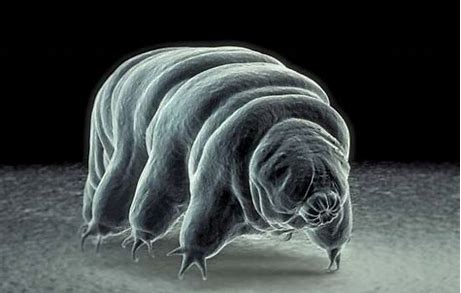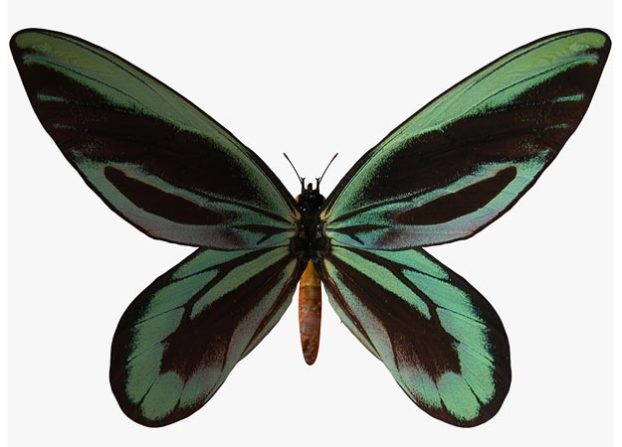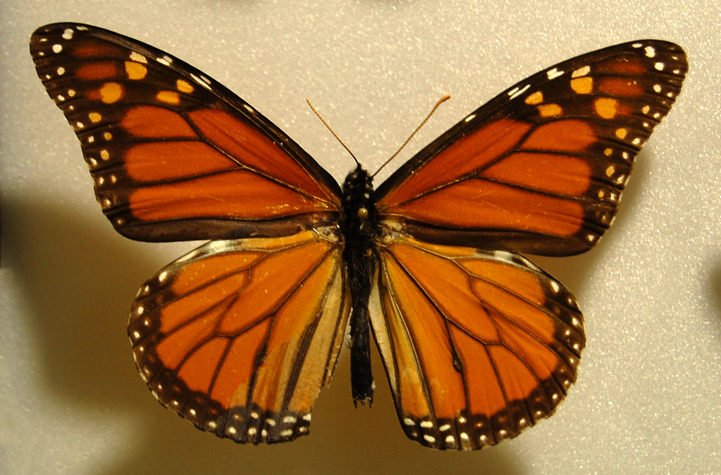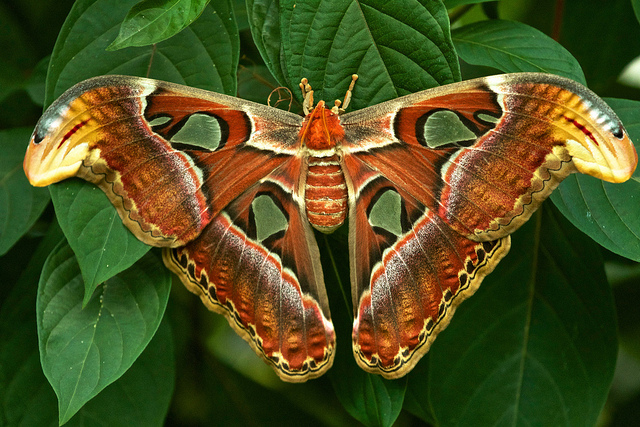Difference between revisions of "Physical World/Invertebrates"
(Added images) |
(Added images) |
||
| Line 86: | Line 86: | ||
The animal's dark colour, cloak-like webbing, and red eyes give the vampire squid its name — it does not feed on blood | The animal's dark colour, cloak-like webbing, and red eyes give the vampire squid its name — it does not feed on blood | ||
|- | |- | ||
| − | | | + | |[[File:Nautilus.jpg|none|thumb]] |
|'''Nautilus''' | |'''Nautilus''' | ||
| Line 123: | Line 123: | ||
Tardigrades are notable for being perhaps the most durable known organisms, able to survive extreme conditions. They are 0.5 mm long when fully grown | Tardigrades are notable for being perhaps the most durable known organisms, able to survive extreme conditions. They are 0.5 mm long when fully grown | ||
|- | |- | ||
| − | | | + | |[[File:Queen Alexandra Birdwing.jpg|none|thumb]] |
|'''Queen Alexandra’s birdwing''' | |'''Queen Alexandra’s birdwing''' | ||
| + | |||
| Line 130: | Line 131: | ||
The largest butterfly in the world, with females reaching wingspans of 25 cm (9.8 inches). Only found in Papua New Guinea | The largest butterfly in the world, with females reaching wingspans of 25 cm (9.8 inches). Only found in Papua New Guinea | ||
| − | |||
Named in honour of Alexandra of Denmark | Named in honour of Alexandra of Denmark | ||
|- | |- | ||
| − | | | + | |[[File:Monarch butterfly.jpg|none|thumb]] |
|'''Monarch butterfly''' | |'''Monarch butterfly''' | ||
| + | |||
| Line 142: | Line 143: | ||
Milkweed butterfly known for its annual late-summer/autumn migration from the United States and southern Canada to Mexico covering thousands of miles | Milkweed butterfly known for its annual late-summer/autumn migration from the United States and southern Canada to Mexico covering thousands of miles | ||
|- | |- | ||
| − | | | + | |[[File:Atlas moth.jpg|none|thumb]] |
|'''Atlas moth''' | |'''Atlas moth''' | ||
| + | |||
| Line 150: | Line 152: | ||
Considered the largest moths in the world in terms of total wing surface area, but recent sources confer this title upon the Hercules Moth | Considered the largest moths in the world in terms of total wing surface area, but recent sources confer this title upon the Hercules Moth | ||
| − | |||
Common across the Malay archipelago | Common across the Malay archipelago | ||
| Line 156: | Line 157: | ||
| | | | ||
|'''Bullet ant''' | |'''Bullet ant''' | ||
| + | |||
| Line 162: | Line 164: | ||
Named on account of its powerful and potent sting due to its venom. The pain caused by the sting is ranked as the most painful according to the Schmidt sting pain index | Named on account of its powerful and potent sting due to its venom. The pain caused by the sting is ranked as the most painful according to the Schmidt sting pain index | ||
| − | + | Distributed throughout Central America and South America | |
| − | |||
|- | |- | ||
| | | | ||
|'''Cuckoo bee''' | |'''Cuckoo bee''' | ||
| + | |||
subfamily Nomadinae | subfamily Nomadinae | ||
| − | |||
Refers to a number of bees which have evolved the kleptoparasitic behaviour of laying their eggs in the nests of other bees. Often wasp-like in appearance | Refers to a number of bees which have evolved the kleptoparasitic behaviour of laying their eggs in the nests of other bees. Often wasp-like in appearance | ||
| Line 176: | Line 177: | ||
| | | | ||
|'''Periodical cicada''' | |'''Periodical cicada''' | ||
| + | |||
| Line 184: | Line 186: | ||
| | | | ||
|'''Goliath beetle''' | |'''Goliath beetle''' | ||
| + | |||
family Scarabaeidae | family Scarabaeidae | ||
| + | |||
Among the largest insects on Earth. Males can be 110 mm (4.3 in) in length | Among the largest insects on Earth. Males can be 110 mm (4.3 in) in length | ||
| − | |||
Prominent markings common to all of the ''Goliathus'' species are the sharply contrasting black vertical stripes on the thoracic shield | Prominent markings common to all of the ''Goliathus'' species are the sharply contrasting black vertical stripes on the thoracic shield | ||
| Line 196: | Line 199: | ||
| | | | ||
|'''Dung beetle''' | |'''Dung beetle''' | ||
| + | |||
family Scarabaeidae | family Scarabaeidae | ||
| + | |||
A dung beetle can bury dung 250 times heavier than itself in one night | A dung beetle can bury dung 250 times heavier than itself in one night | ||
| − | |||
Several species of the dung beetle, most notably the species ''Scarabaeus sacer'', enjoyed a sacred status among the ancient Egyptians | Several species of the dung beetle, most notably the species ''Scarabaeus sacer'', enjoyed a sacred status among the ancient Egyptians | ||
| Line 208: | Line 212: | ||
| | | | ||
|'''Stag beetle''' | |'''Stag beetle''' | ||
| + | |||
family Lucanidae | family Lucanidae | ||
| + | |||
Name is derived from the large and distinctive mandibles found on the males of most species, which resemble the antlers of stags | Name is derived from the large and distinctive mandibles found on the males of most species, which resemble the antlers of stags | ||
| − | |||
The species ''Lucanus cervus'' is the largest terrestrial insect in Europe | The species ''Lucanus cervus'' is the largest terrestrial insect in Europe | ||
| Line 220: | Line 225: | ||
| | | | ||
|'''Sydney funnel-web spider''' | |'''Sydney funnel-web spider''' | ||
| + | |||
| Line 225: | Line 231: | ||
If has a bite capable of causing serious injury or death in humans if left untreated | If has a bite capable of causing serious injury or death in humans if left untreated | ||
| − | |||
A funnel-web's burrow characteristically has irregular silk trip-lines radiating from the entrance | A funnel-web's burrow characteristically has irregular silk trip-lines radiating from the entrance | ||
| Line 231: | Line 236: | ||
| | | | ||
|'''Redback spider''' | |'''Redback spider''' | ||
| + | |||
| Line 239: | Line 245: | ||
| | | | ||
|'''Black widow spider''' | |'''Black widow spider''' | ||
| + | |||
| Line 247: | Line 254: | ||
| | | | ||
|'''False widow spider''' | |'''False widow spider''' | ||
| + | |||
Revision as of 17:45, 30 June 2021
| Box jellyfish
class Cubozoa Distinguished by their cube-shaped medusae. Some species of box jellyfish produce extremely potent venom Found in the Indo-Pacific region, notably off the coast of Australia | |
| Portuguese man o’ war
Physalia physalis Not a common jellyfish but a colony of specialized minute individuals called zooids Name comes from the supposed resemblance to the Portuguese version of an armed sailing ship at full sail | |
| Crown-of-thorns starfish
Acanthaster planci The adult crown-of-thorns is a carnivorous predator that usually preys on reef coral polyps Most common on the Great Barrier Reef | |
| Japanese spider crab
Macrocheira kaempferi It has the greatest leg span of any arthropod, reaching 3.8 m (12 ft) from claw to claw. The whole crab can weigh up to 19 kilograms (42 lb) – second only to the American lobster among all living arthropod species | |
| Christmas Island red crab
Gecarcoidea natalis Endemic to Christmas Island and the Cocos (Keeling) Islands in the Indian Ocean Well known for their annual mass migration to the sea to lay their eggs in the ocean | |
| Fiddler crab
genus Uca Well known for their sexually dimorphic claws; the males’ major claw is much larger than the minor claw while the females’ claws are both the same size | |
| Horseshoe crab
family Limulidae
Living fossils. The earliest horseshoe crab fossils are from 450 million years ago Do not have haemoglobin in their blood, but instead use haemocyanin to carry oxygen. Because of the copper present in haemocyanin, their blood is blue | |
| Vampire squid
Vampyroteuthis infernalis Name means "vampire squid of Hell" The animal's dark colour, cloak-like webbing, and red eyes give the vampire squid its name — it does not feed on blood | |
| Nautilus
family Nautilidae
Living fossils
The nautilus shell presents one of the finest natural examples of a logarithmic spiral Swims using jet propulsion | |
| Sea cucumber
class Holothuroidea Have a leathery skin and an elongated body containing a single, branched gonad. Sea cucumbers are found on the sea floor worldwide and are used in Chinese cuisine | |
| Tardigrade
Phylum Tardigrada Also known as water bear or moss piglet Tardigrades are notable for being perhaps the most durable known organisms, able to survive extreme conditions. They are 0.5 mm long when fully grown | |
| Queen Alexandra’s birdwing
Ornithoptera alexandrae The largest butterfly in the world, with females reaching wingspans of 25 cm (9.8 inches). Only found in Papua New Guinea Named in honour of Alexandra of Denmark | |
| Monarch butterfly
Danaus plexippus Milkweed butterfly known for its annual late-summer/autumn migration from the United States and southern Canada to Mexico covering thousands of miles | |
| Atlas moth
Attacus atlas
Common across the Malay archipelago | |
| Bullet ant
Paraponera clavata Named on account of its powerful and potent sting due to its venom. The pain caused by the sting is ranked as the most painful according to the Schmidt sting pain index Distributed throughout Central America and South America | |
| Cuckoo bee
subfamily Nomadinae Refers to a number of bees which have evolved the kleptoparasitic behaviour of laying their eggs in the nests of other bees. Often wasp-like in appearance | |
| Periodical cicada
genus Magicicada After 13 or 17 years, mature cicada nymphs emerge at any given locality, synchronously and in tremendous numbers. After mating and egg laying, the adult cicadas are gone for another 13 or 17 years | |
| Goliath beetle
family Scarabaeidae
Among the largest insects on Earth. Males can be 110 mm (4.3 in) in length Prominent markings common to all of the Goliathus species are the sharply contrasting black vertical stripes on the thoracic shield | |
| Dung beetle
family Scarabaeidae
A dung beetle can bury dung 250 times heavier than itself in one night Several species of the dung beetle, most notably the species Scarabaeus sacer, enjoyed a sacred status among the ancient Egyptians | |
| Stag beetle
family Lucanidae
Name is derived from the large and distinctive mandibles found on the males of most species, which resemble the antlers of stags The species Lucanus cervus is the largest terrestrial insect in Europe | |
| Sydney funnel-web spider
Atrax robustus If has a bite capable of causing serious injury or death in humans if left untreated A funnel-web's burrow characteristically has irregular silk trip-lines radiating from the entrance | |
| Redback spider
Latrodectus hasseltii Venomous spider indigenous to Australia. The adult female is easily recognised by a prominent red stripe on the upper side of her abdomen and an hourglass-shaped red/orange streak on the underside. May be found on the underside of toilet seats | |
| Black widow spider
Latrodectus mactans Well known for the distinctive black and red coloring of the female of the species that will occasionally eat her mate after reproduction. The species is native to North America. The venom is seldom fatal to humans | |
| False widow spider
genus Steatoda Many spiders of the genus Steatoda are often mistaken for widow spiders (Latrodectus); however Steatoda are significantly less harmful to humans |
